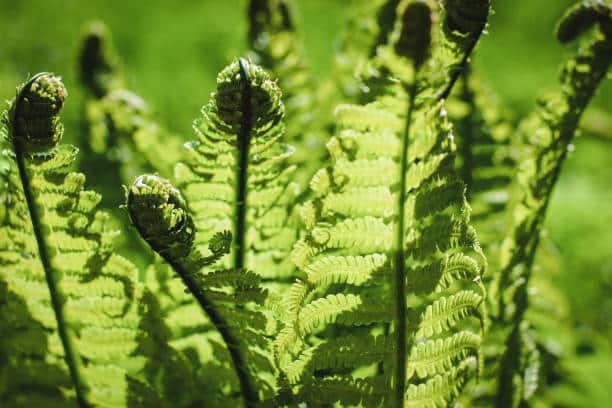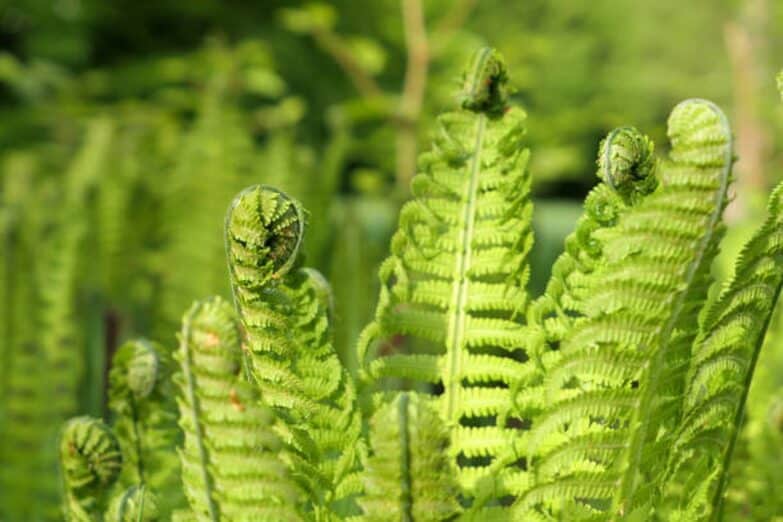Unmistakable in its elegance, the Ostrich Fern (Matteuccia struthiopteris) stands tall in the plant kingdom, bringing an unmatched vitality and lush, green aesthetic to any landscape. Named after the ostrich’s plume due to its large, feather-like fronds, this fern is a robust, easy-to-care perennial that promises a delightful gardening experience. This article aims to guide you in creating your own foliage paradise with the Ostrich Fern as its verdant centerpiece.
Understanding the Ostrich Fern
Anatomy of the Ostrich Fern
This plant exhibits dimorphism – that is, two distinct forms of fronds. The first, known as sterile fronds, grow in a tight, vase-like clump and display the characteristic feathery appearance. The second type, known as fertile fronds, grow in the center, standing erect and turning brown in the fall, lasting through the winter.
Natural Habitat
The Ostrich Fern is a native of the Northern Hemisphere, thriving in moist, cool woodland areas. Understanding its natural habitat helps in providing optimum care for this plant in your garden.
Cultivating Your Ostrich Fern
Planting
To replicate the fern’s natural environment, choose a location in your garden with partial to full shade and cool, moist soil. Spring is the best time to plant Ostrich Ferns.
Soil and Watering
Ostrich Ferns prefer a well-draining soil rich in organic matter. Keeping the soil consistently moist is crucial, but ensure it is not waterlogged, which could lead to root rot.
Climate and Temperature
Being hardy in USDA zones 3-7, Ostrich Ferns can tolerate cold, but they prefer cool climates. They can also tolerate some heat, provided they have ample shade and consistent watering.
Propagation of Ostrich Ferns
Division
The most common way to propagate an Ostrich Fern is through division. The best time to do this is in early spring before the new fronds emerge. Carefully dig up the plant and separate a section of the rhizome with a sharp knife.
Spores
Though slightly more challenging, Ostrich Ferns can also be propagated from spores. Collect the spores from mature, brown fertile fronds and sow them in a moist, sterile growing medium.
Potential Challenges and Solutions
While Ostrich Ferns are hardy plants, they may encounter a few issues.
Pests and Diseases
Ostrich Ferns are relatively disease-resistant. Occasionally, pests such as slugs or snails may be attracted to the plant. Regularly inspect your ferns for signs of pests and remove any that you find.
Invasive Tendencies
These ferns can be somewhat aggressive spreaders in ideal conditions. To control their spread, consider planting them in a confined space or routinely removing new shoots.
Beneficial Aspects of the Ostrich Fern

Aesthetics
With their lush greenery and unique feather-like shape, Ostrich Ferns add an unmatched aesthetic appeal to gardens, especially woodland or shade gardens.
Edibility
The young, emerging fronds, known as fiddleheads, are a culinary delicacy in some cultures. They are rich in antioxidants, omega-3, and omega-6 fatty acids.
Conclusion
Cultivating an Ostrich Fern garden promises a world of lush, green, and feathery paradise right in your backyard. While it may have its fair share of challenges, the beauty and charm of these ferns make every effort worthwhile. Remember, with the right conditions and proper care, your Ostrich Ferns can be a resilient and stunning addition to your garden, bringing you closer to creating your very own lush, green foliage paradise.

